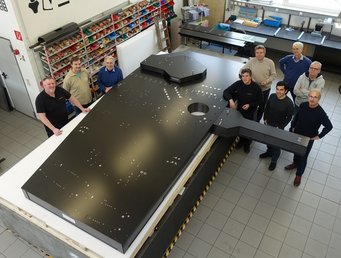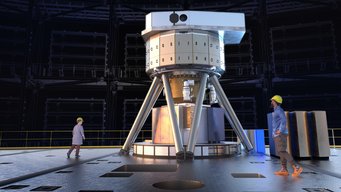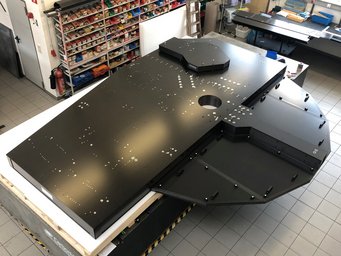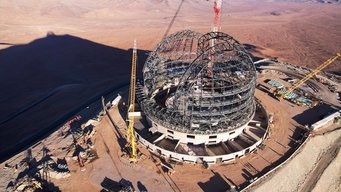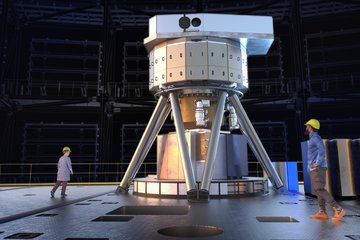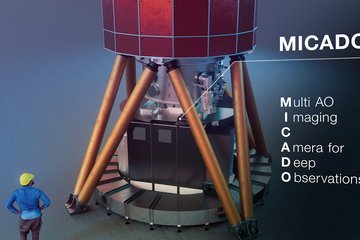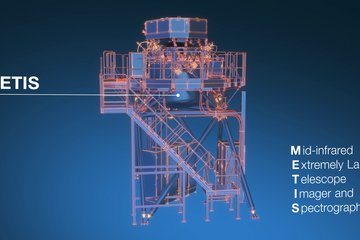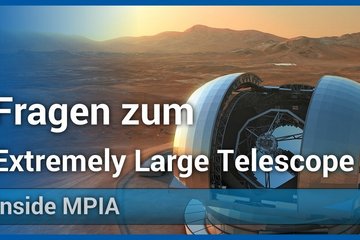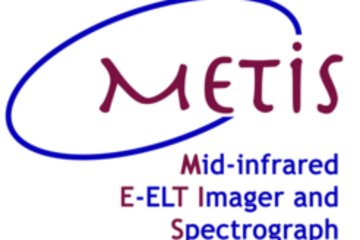Key milestone reached in the construction of the Relay Optics Bench for ELT-MICADO
A few days ago, the optical bench of the Relay Optics was completed as a central component for the high-tech instrument MICADO. This is an important milestone, as MICADO is one of only four large measuring instruments with which the world's largest telescope for the visible and infrared wavelength range currently under construction - the Extremely Large Telescope (ELT) - will commence scientific operations in the course of this decade.
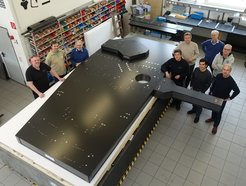
Alexander Deckert (Production Manager Carbon-Werke), Ralph Hofferbert (MPIA) , Franz Weißgerber (Company founder Carbon Werke), Wolfgang Thum (Assembly Carbon-Werke), Wolfram Schlossmacher (Managing Director CarbonVision), Santiago Barboza (MPIA), Friedrich Müller (MPIA), Ralf-Rainer Rohloff (MPIA), Helmut Espig (Design CarbonVision).
While construction work on the huge dome building of the ELT is progressing in the Chilean Atacama Desert on Cerro Armazones, a mountain over 3000 meters high (see picture below), numerous research institutions and cooperating companies are working highly committed on the development and construction of the telescope components and scientific measuring instruments. The ELT of the European Southern Observatory ESO is expected to have "first light" around the year 2028 with its main mirror of 39 meters in diameter. This will be the moment when the radiation of a celestial object is captured by a telescope and its cameras for the first time and its performance can be tested in practice. The ELT observes in particular in the near-infrared spectral range.
MICADO
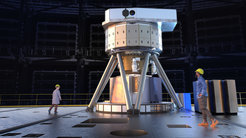
As with all large telescopes, the light of the celestial objects collected by the primary mirror must be processed in the telescope focus by high-tech measuring instruments such as special digital cameras and spectrographs. The Max Planck Institute for Astronomy (MPIA) in Heidelberg is involved in two of the four first-generation ELT instruments with contributions to MICADO and METIS.
The name MICADO is an acronym and stands for "Multi-AO Imaging Camera for Deep Observations". MICADO will allow the ELT to record direct images and long-slit spectra in the wavelength range between 0.8 and 2.4 micrometers. The combination of this high-performance instrument with the giant ELT will set new standards in almost all areas of astrophysics - from the study of exoplanets to distant galaxies.
Thanks to adaptive optics (AO), with which the image blurring caused by turbulence in the Earth's atmosphere can be corrected in real time, the image quality of MICADO will be diffraction-limited and will be able to exceed the resolution of the James Webb Space Telescope (JWST) by up to a factor of 6. However, with a diameter of just under one arc minute, the field of view is smaller than that of the JWST.
The consortium for the construction of MICADO consists of a total of ten institutions from six countries as well as ESO itself and is led by the Max Planck Institute for Extraterrestrial Physics (MPE) in Garching (see link below). The MPIA in Heidelberg supplies the warm pre-optics (ambient temperature) of MICADO, which guides the starlight from the telescope into the cold main camera optics (nitrogen-cooled, 77K) with almost no loss of sensitivity and image sharpness. This subsystem prepares the beam coming directly from the 39-meter telescope for MICADO. In addition, the MPIA supplies the calibration unit for all standard scientific observation modes.
Optical bench made of carbon fiber
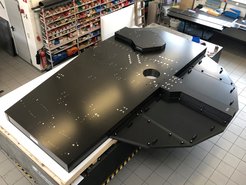
The basis for the assembly of these important components is an optical bench made of carbon fiber, which later - fully populated and equipped with a protective cover - forms the upper part of the MICADO instrument at a height of over 6 meters. This so-called "MICADO Relay Optics Bench" has now been completed by CarbonVision and approved by the MICADO team at MPIA.
"This is a key milestone for MPIA's contribution to MICADO and we have taken a decisive step towards using this unique instrument on what will be the world's largest telescope. We would therefore like to thank our partners CarbonVision and Carbon-Werke Weißgerber for the excellent work that has been done," says Dr. Ralph Hofferbert, MICADO project manager at MPIA.
The optical bench is the largest carbon component ever developed by CarbonVision. Despite its enormous dimensions of around 4.7 m × 2.2 m × 0.2 m, it only weighs around 500 kg. This meant that it could be assembled and bonded by just four people in around 60 minutes.
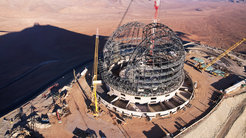
In a few weeks, probably at the end of February 2024, the optical bench will be delivered to MPIA after final finishing work and blackening for straylight reduction and will then be equipped and tested with optical components such as the mirrors of the pre-optics and the calibration units in the institute's assembly hall for approximately three years. It will then be combined with the remaining MICADO components at the Max Planck Institute for Extraterrestrial Physics (MPE) in Garching. The complete instrument is then scheduled to be shipped to Chile in spring 2028, where it will be installed on the ELT, which hopefully will also be completed.
Further information
MICADO-Webpage at MPE in Garching
ELT-Webpage of ESO
MPIA-Realease about MICADO and METIS as of May 2023
KJ
